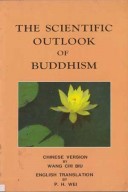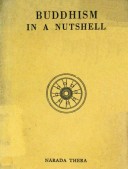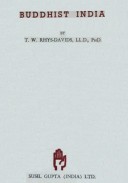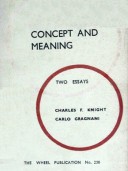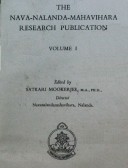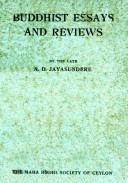Tìm Sách
Sách tiếng Anh-English >> The Scientific Outlook Of Buddhism
Thông tin tra cứu
- Tên sách : The Scientific Outlook Of Buddhism
- Tác giả : Wang Chi Biu
- Dịch giả : P. H. Wei
- Ngôn ngữ : Anh
- Số trang : 78
- Nhà xuất bản : Hong Kong Buddhist Books Distributor
- Năm xuất bản : 1975
- Phân loại : Sách tiếng Anh-English
- MCB : 12010000003078
- OPAC :
- Tóm tắt :
THE SCIENTIFIC OUTLOOK OF BUDDHISM
Chinese version By WANG CHI BIU
English translation By P. H. WEI
INTRODUCTION
Buddhism, that oldest world religion, is generally misconceived to be a blind faith. As seen from its outward appearance, really it is painted with a strong religious colour. To a non-Buddhist, who sees the golden image of Buddha, and hears the chanting of Sanskrit Sutras and the clinking of the bell, Buddhism is nothing but idolatry; in view of their passive life, Buddhist of the Order are said to be “social parasites”. However, on the contrary, whatever is expounded in Buddhism, down to every minor matter, is based on the teaching of Buddha. Indeed, some of the Buddhist principles are too profound to be easily explained and understood by the lay people, except those of high intellect. Without making a serious effort to study the issue in question, those who say what other say, and believe what others believe, that Buddhism is a superstitious faith, betray not only their ignorance of its fundamental principles but also their lack of common sense and understanding; therefore, in regard to Buddhism, what they say and what they believe cannot but be blind and untrue.
Depending in what sense religion is defined, Buddhism may be called religion or non-religion. If religion refers to Monotheism or Polytheism, then Buddhism, being non-theological, is no religion at all. If religion, broadly defined, refers to some school of teaching, Buddhism in that sense may be said to be in same category as Confucianism and Taoism.
CONTENTS
Introduction
Chapter 1. BUDDHISM IS ABSOLUTELY A RATIONAL RELIGION
(A) To remove ignorance
(B) To let go emotions
(C) To establish right belief
Chapter 2. THE RESEARCH SPIRIT OF BUDDHISM
(A) Research methods
(B) Research tools
(C) The objects of research
Chapter 3. THE BUDDHIST THEORY OF EQUALITY
(A) Illusory phenomena of “Ego personality” and “other-personality”
(B) The true meaning of Objectivity
(C) Compassion and altruism
(D) To distinguish the good and the evil
Chapter 4. THE BUDDHIST THEORY OF CAUSATION
(A) Heretical views in contravention of the law of cause and effect
1. the non-cause theory and effect
2. the unequal cause theory and the multiple unequal causes theory
3. Fatalism
4. Mechanism
(B) The universal law of cause and effect
(C) Holding to Existence, Extinction, Annihilation and permanence
Chapter 5. THE POSITIVE SPIRIT OF BUDDHISM
(A) In pursuit of freedom
(B) The sublime wish
Chapter 6 PRACTICAL APPLICATION OF BUDDHISM
(A) Service in the Buddhist sense
(B) Responsibility in the Buddhist sense
(C) Correct judgment
(D) Unwavering Perseverance
(E) Attitude of sincerity
Conclusion
 Facebook
Facebook
 Google
Google
 Google+
Google+
